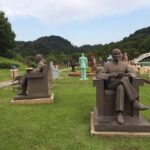
Jefferson Davis was born in Kentucky and raised in Louisiana and Mississippi. A graduate of the United States Military Academy at West Point, his experience as a soldier and his family connections qualified him first for an at-large seat in Congress representing Mississippi, and then for the post of Secretary of War under President Franklin Pierce. In 1856, Davis was elected Senator from Mississippi, a position he would hold until his home state seceded from the Union.
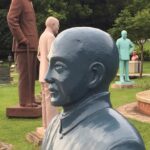
Statues or obelisks memorializing Davis stand in Jackson and Biloxi, Mississippi, and two stand in Vicksburg; in Richmond, Virginia, there are three memorials to Davis; in Memphis, Tennessee, there is a statue; both Frankfort and Fairview in Kentucky maintain a statue; New Orleans, Louisiana, has one; in Pensacola, Florida, there is one; both Hazlehurst and Irwinville, Georgia have memorials to Davis; a bronze figure of Davis stands in the statuary hall of the U.S. Capitol.

In Mississippi City, Mississippi, a plaque marks the site of Jefferson Davis’s final speech as president of the Confederacy, which was a plea for the reunification of the United States.
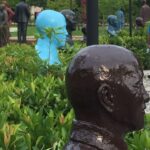
Counties are named for Jefferson Davis in Louisiana, Georgia, Mississippi, and Texas.
Interstate 5 was once called the Jefferson Davis highway (two of its markers are on view at a roadside park in Washington state). In South Carolina, a portion of Highway 1 near Camden is still called the Jefferson Davis Highway.
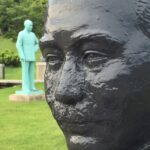
Alabamans may attend Jefferson Davis High School in Montgomery and Jefferson Davis Community College in Brewton. High and middle and elementary schools named for Jefferson Davis serve students in Florida, Louisiana, Mississippi, South Carolina, Texas, and Virginia.
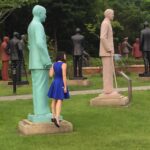
The desk on the U.S. Senate floor which was occupied by Jefferson Davis has been reserved by special decree for use by the senior senator from Mississippi.
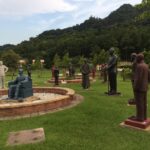
In Alabama, Florida, Kentucky, and Mississippi, the third of June—Jefferson Davis’s birthday—is a state holiday.
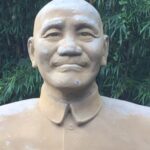
In 1978, a two-thirds majority of the U.S. Senate posthumously restored Jefferson Davis’s right to hold office in the United States government, and the restoration of his privilege was signed by Georgia-born President Jimmy Carter.

An image of Jefferson Davis, part of the largest bas-relief sculpture in the world, leads a band of Confederate soldiers across the face of Stone Mountain, several miles east of Atlanta, Georgia. Davis is shown riding his horse “Blackjack,” just ahead of Robert E. Lee and his horse, “Traveller,” but even so Lee is given priority, for he is nearer to the foreground.
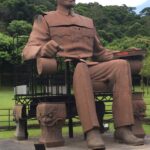
At 12,772 feet, Jeff Davis Peak is the second-highest mountain peak in the Snake Range in eastern Nevada.
* * * * *
The photographs taken at the Cihu Memorial Sculpture Garden, Daxi District, Taoyuan County, Taiwan. The Garden is associated with the Chiang Kai-Shek Mausoleum, the “temporary” resting place of the remains of Chiang Kai-Shek, which await their return to his birthplace in Fenghua, Zhenjiang province, in The People’s Republic of China. The information regarding Jefferson Davis in this essay was accessed at https://en.wikipedia.org/wiki/Jefferson_Davis on February 18, 2020.
* * * * *
On The Seawall recommends …
For background on Taiwan’s grappling with its history, see “Taiwan Premier: CKS Memorial Hall should not be demolished, but repurposed” in Taiwan News (February 2019)
… and “Statue of Chiang Kai-shek Defaced at Taipei’s National Chengchi University” in The News Lens (February 2019)